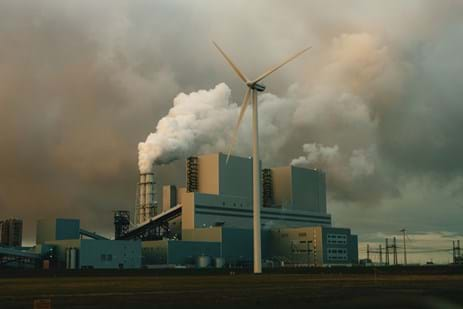Air quality assessments can be a key component of a regulatory approval, or may be triggered by a community complaint or a need to investigate improvements in process or emission control systems. Assessments may look at existing facilities or examine the potential emissions from proposed new ventures. We have vast experience in the field of air quality management and assessment.
Air Quality Impact Assessment & Management
We have conducted air quality assessments and impact assessments for clients in a wide range of industries, including paper manufacture, waste to energy, composting, rendering, renewable fuels, mining, landfilling, food manufacturing, printing, aluminium smelting and chemical treatment.
We have extensive experience is assisting clients address regulatory requirements and community impact issues, utilising our expertise in toxic and odorous air pollutants.
Odour Assessment & Management
Odorous emissions can be generated by a variety of industries, and may adversely impact on local amenity if not managed appropriately. We have successfully completed odour assessments for coffee roasting facilities, rendering operations, broiler farms, abattoirs, automotive and other component manufacturing, pulp and paper mills, biodiesel plants, wastewater treatment facilities and food processing facilities. Our assessments have examined complex mixtures of odorous emissions as well as individual odorous chemical species, and have facilitated the design of odour abatement systems.
Air Dispersion Modelling
Air dispersion modelling is a powerful computer modelling tool used to predict the ground level concentration of compounds being discharged from a facility. The results of the modelling can be used to demonstrate compliance with relevant regulatory requirements, assist in developing pollution reduction schemes, or to assess pollution complaints and incidences. We have considerable experience in air dispersion modelling, including model development and results interpretation.
Particulate Assessments
Particulate emissions can pose a risk to human health and present a community amenity issue in the form of visible emissions or fallout. The potential emissions of concern include PM10 (particles with mean aerodynamic diameter less than 10 microns), PM2.5(particles with mean aerodynamic diameter less than 2.5 microns), respirable crystalline silica and nuisance dust.
We have extensive experience in undertaking dust emission assessments, as well providing advice on best practice dust management strategies.
Our Expertise Includes:
-
AERMOD: an advanced steady-state Gaussian plume model that can be used for areas with a greater variety of terrains and meteorology than AUSPLUME. Aermod is currently the recommended air dispersion regulatory model for use in the USA, and is expected to soon replace AUSPLUME as the accepted regulatory model in many Australian jurisdictions.
-
WRF (Weather Research and Forecasting Model): a fully prognostic mesoscale meteorological model capable of simulating 3D wind fields, temperature, and other atmospheric parameters at high spatial and temporal resolution. WRF is used to generate site-specific meteorology for dispersion modelling, particularly in areas where observational data are sparse, in complex terrain, or under variable synoptic conditions.
-
Field Odour Surveillance: the systematic assessment of odour emissions at sensitive locations by trained personnel. Our team are screened on an odour panel in accordance with AS/NZS 4323.3:2001 ‘Stationary source emissions – determination of odour concentration by dynamic olfactometry’. This ensures reliable detection and characterisation of odours under real-world conditions. Field odour surveys are particularly useful for verifying model predictions, assessing community impacts, and supporting odour management strategies.
Our Clients Include:
-
Industrial operators (manufacturing, utilities, waste management)
- Property developers (greenfield, brownfield, and redevelopment sites)
- Community stakeholders (resident groups)
- Agricultural operators (including composting and intensive animal industries)
- Industrial developers (planning approvals, compliance audits)
Examples Projects
Statutory Audit, Dairy Processing Facility
The statutory audit was an EPA requirement resulting from a dairy processing facility exceeding its licence limits for emissions of particulate matter.
PJRA evaluated the performance of the emission controls and made recommendations on enhancing the efficiency of particulate removal. Dispersion modelling was used to predict ground level concentrations. A human health risk assessment was then performed to demonstrate that the residual particulates were not harmful to humans when inhaled. This enabled the client to successfully apply to EPA for an increase in its licence limits. The result was a reduction in capital expenditure without compromising the environment.
Dust Impact Assessment near a Quarry
PJRA designed and implemented a comprehensive dust monitoring program for a rock quarry surrounded by residences. This involved extensive liaison with the regulatory bodies and regular collation, reporting and interpretation of collected data. PJRA found that fog events were interfering with the readings of dust monitoring, and consequently developed a computer-based simulator that allowed for fog events to be taken into account when interpreting the data.
Air Quality Impact Assessment for Alternative Fuel Boiler at a Pulp and Paper Mill
An air quality impact assessment was used to assess the impact of utilising paper manufacturing waste as an alternative fuel source for a boiler at a paper mill. The composition of the waste stream was analysed in order for estimate emissions use in the dispersion model. The project involved extensive discussions with the EPA to determine licence conditions for the use of the alternative fuel.
Expert Evidence Case: Odour Emissions from a Proposed Abattoir Facility
Expert witness testimony was presented on expected odour impacts from a proposed abattoir facility. The evidence involved air dispersion modelling using AERMOD and an evaluation of the risk posed by the predicted concentrations odour. The risk assessment demonstrated that odour was unlikely to result in amenity impacts.
Expert Evidence on Buffers for precinct planning for Shenstone Park PSP
Expert witness testimony was presented on amenity buffers in relation to the Shenstone Park Precinct Structure Plan. The evidence included consideration of noise, vibration and dust. The planning panel accepted PJRA’s assessment, and our recommended buffer was adopted and incorporated in the Amendment C241wsea to the Whittlesea Planning Scheme.



